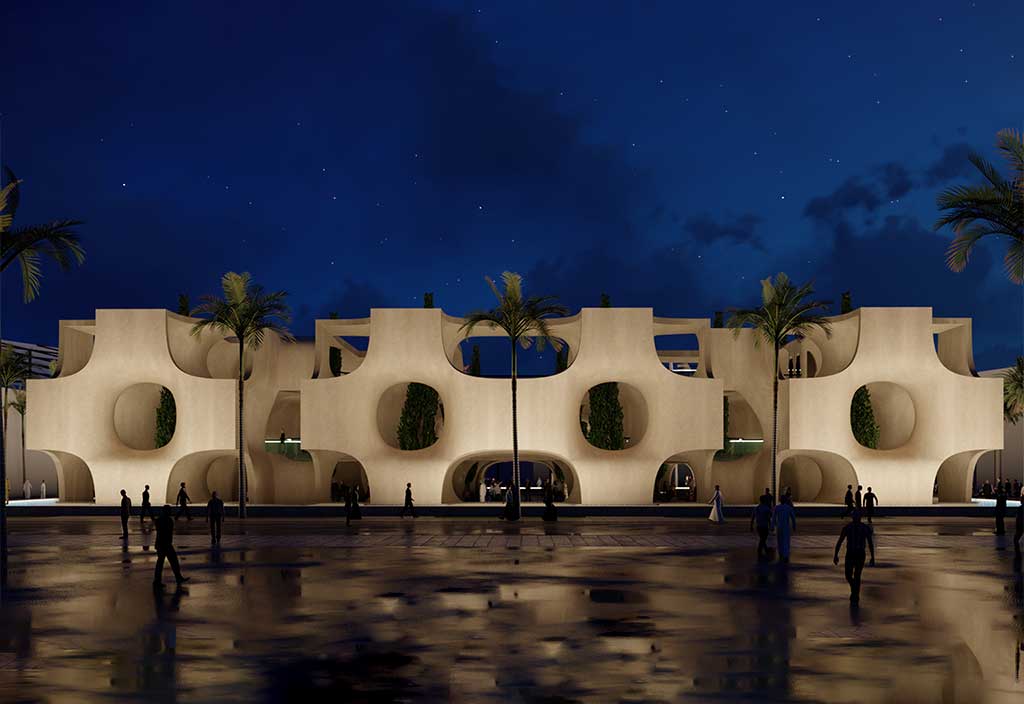
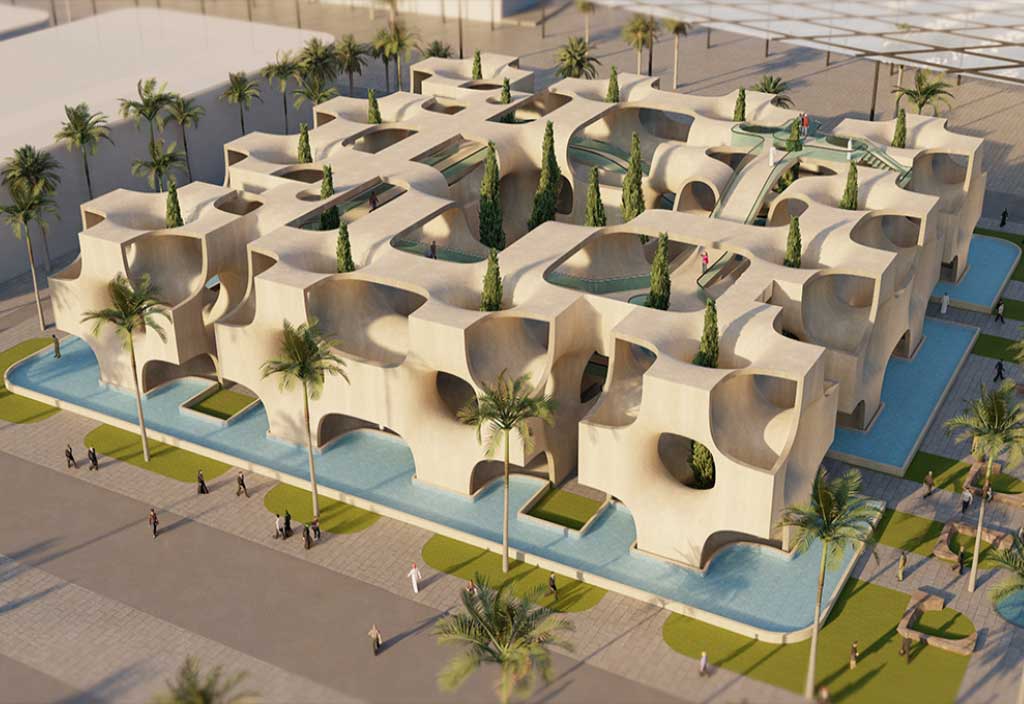
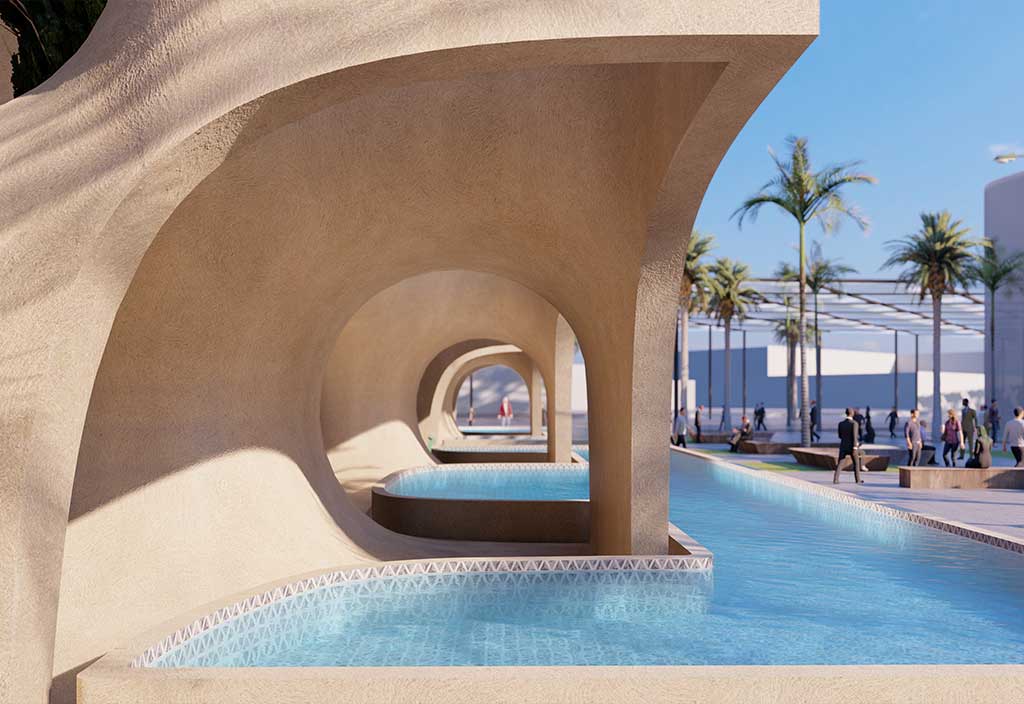




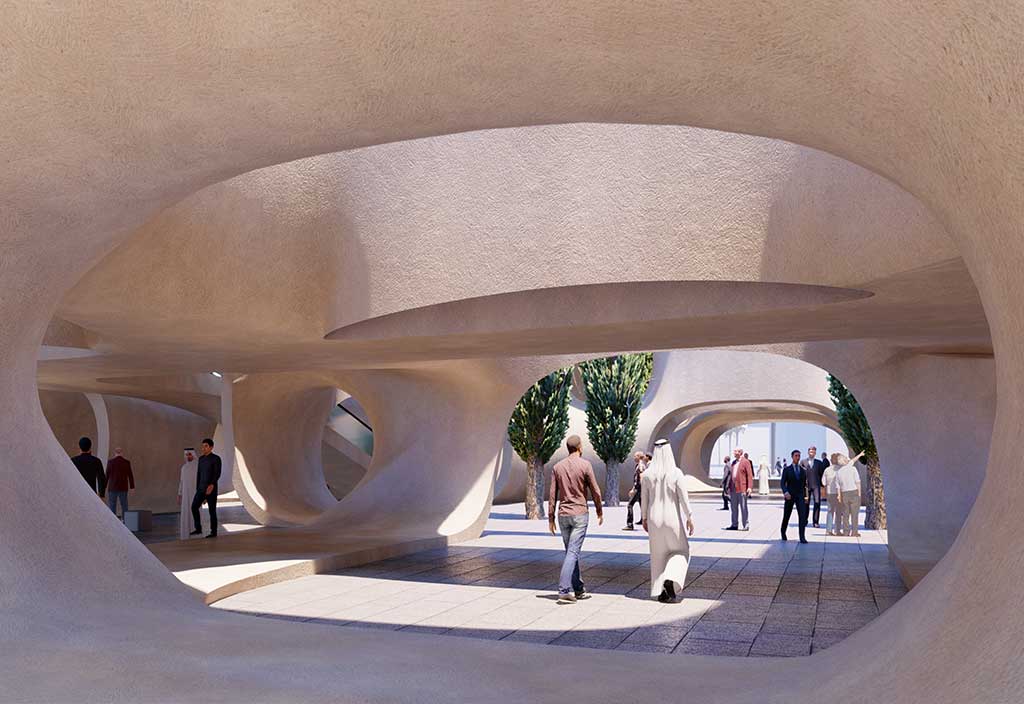
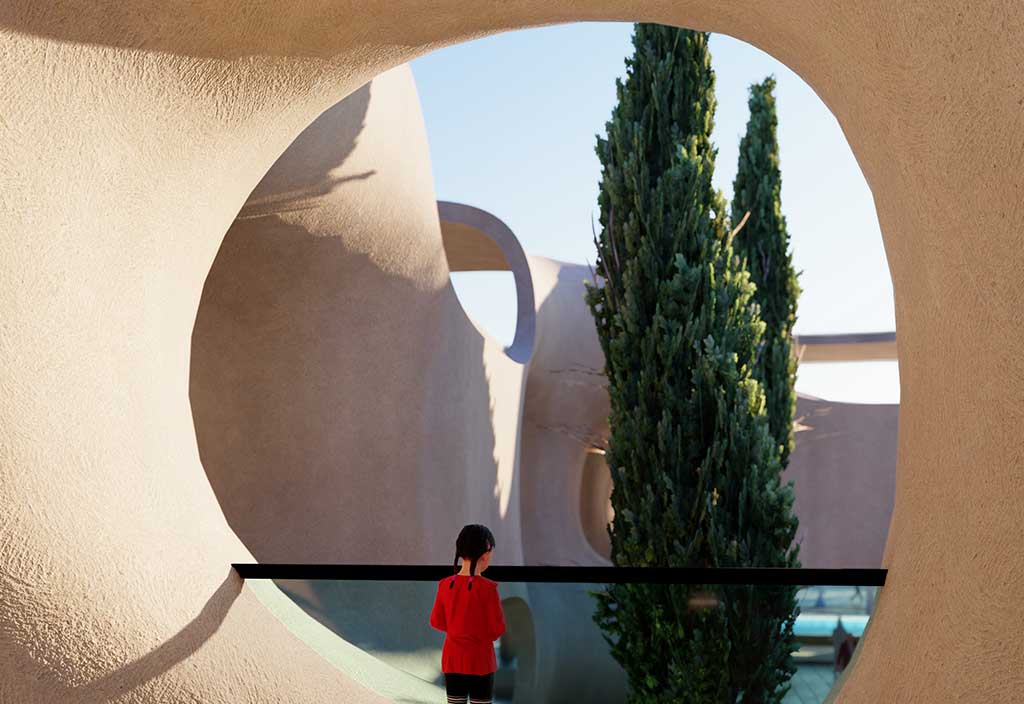
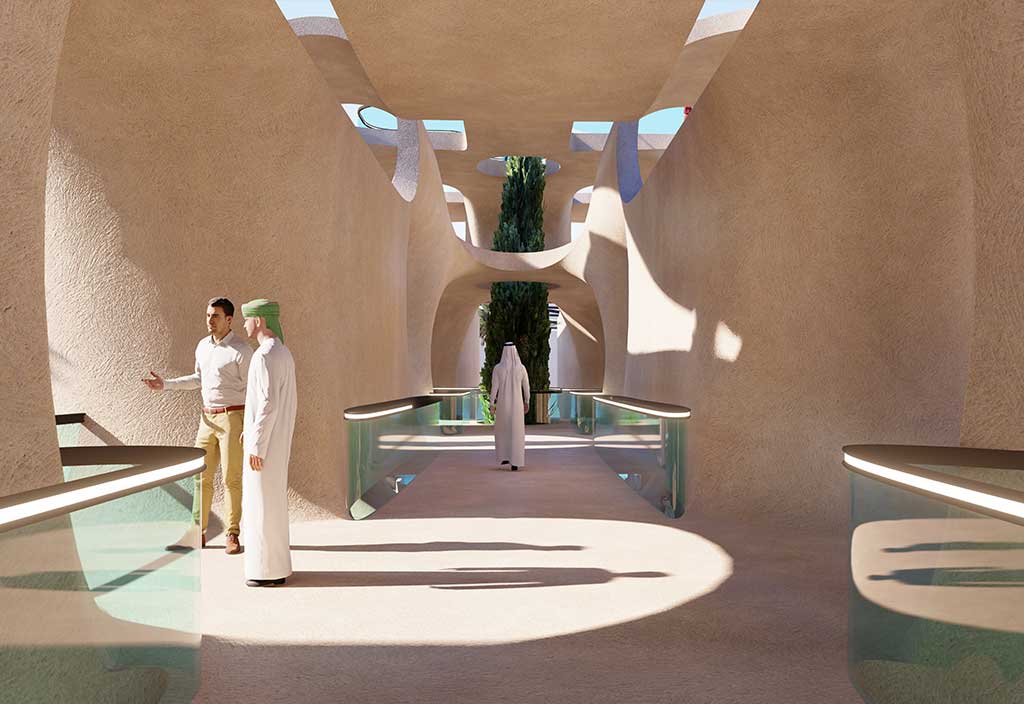
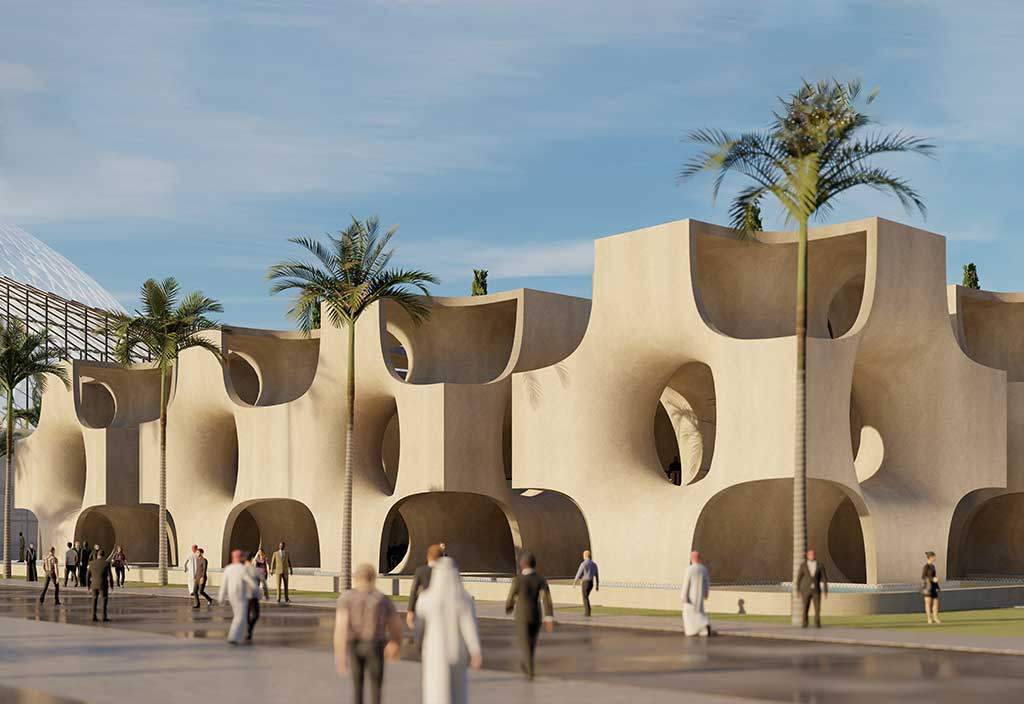

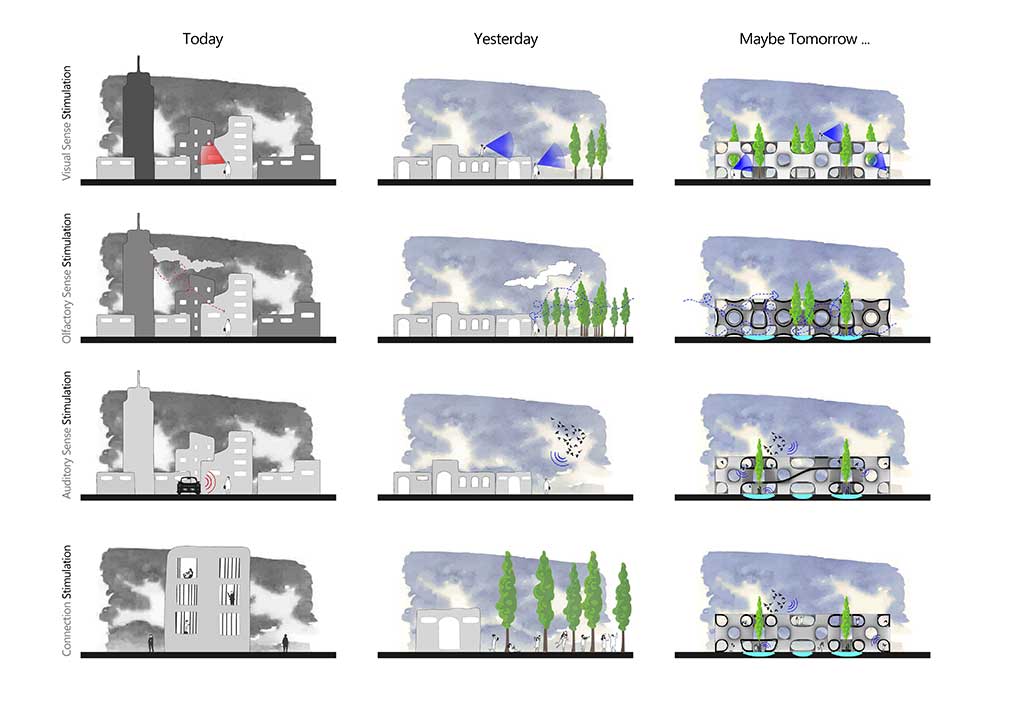



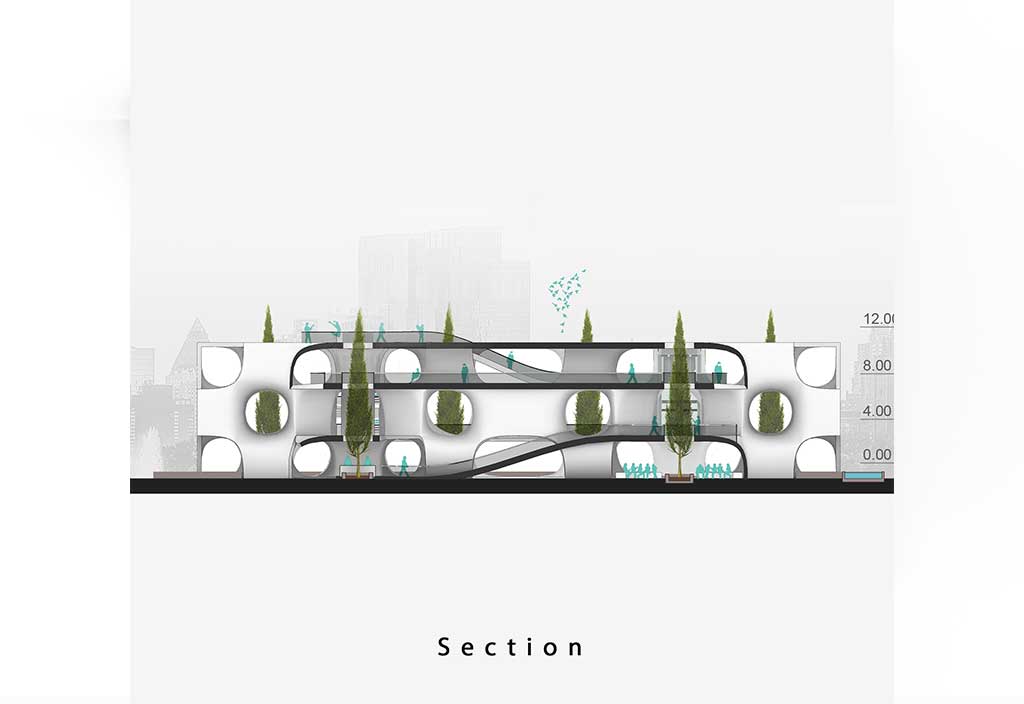
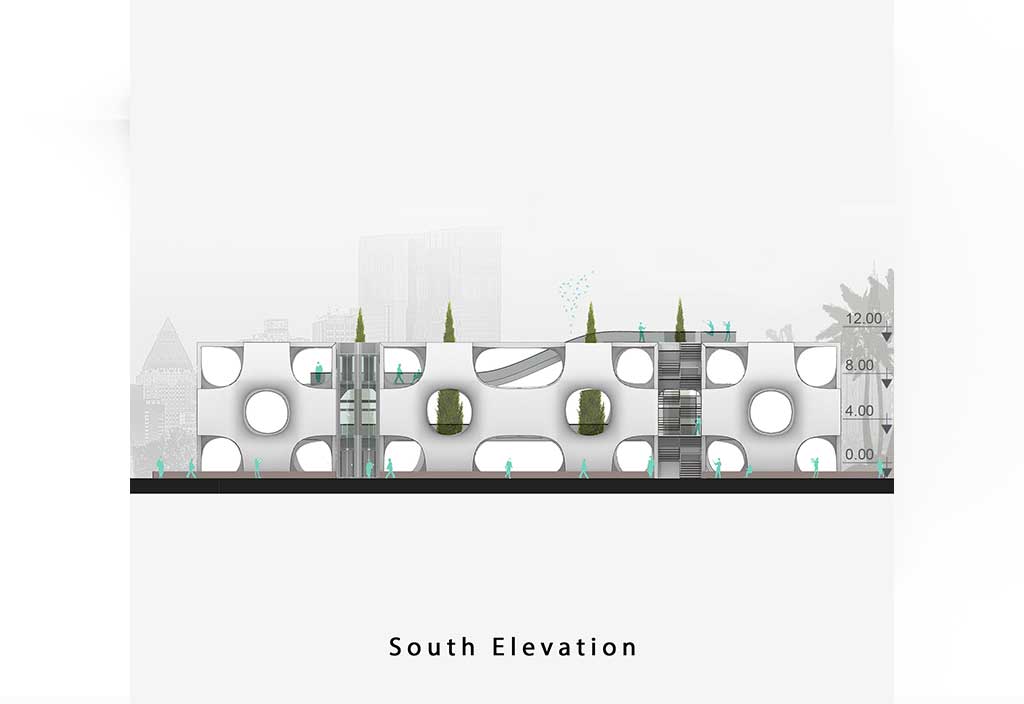

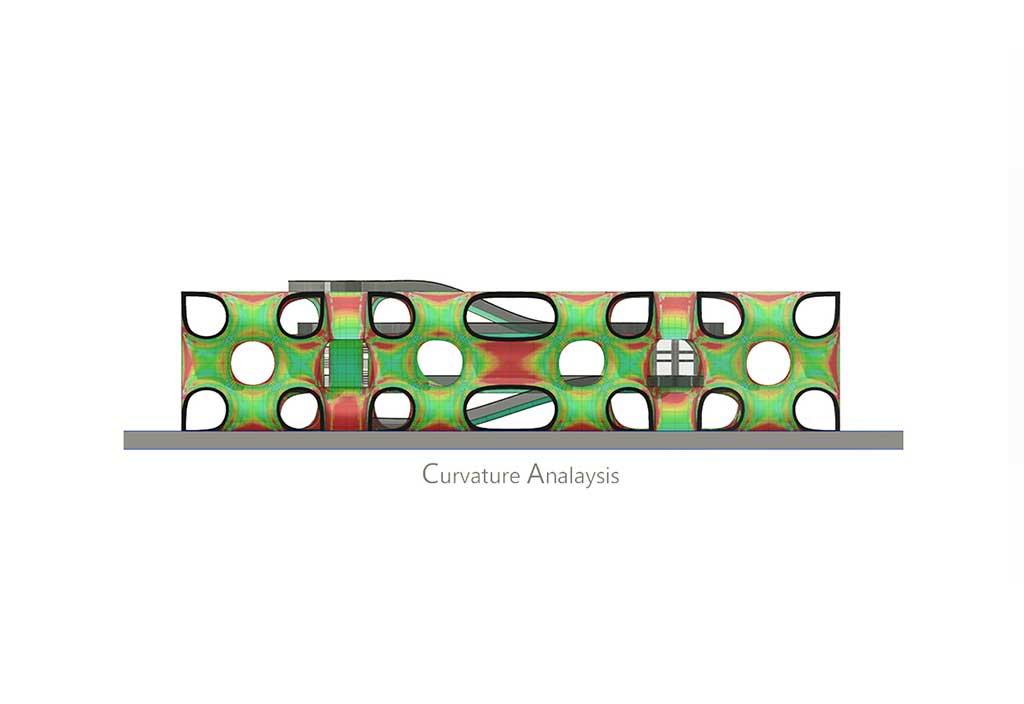
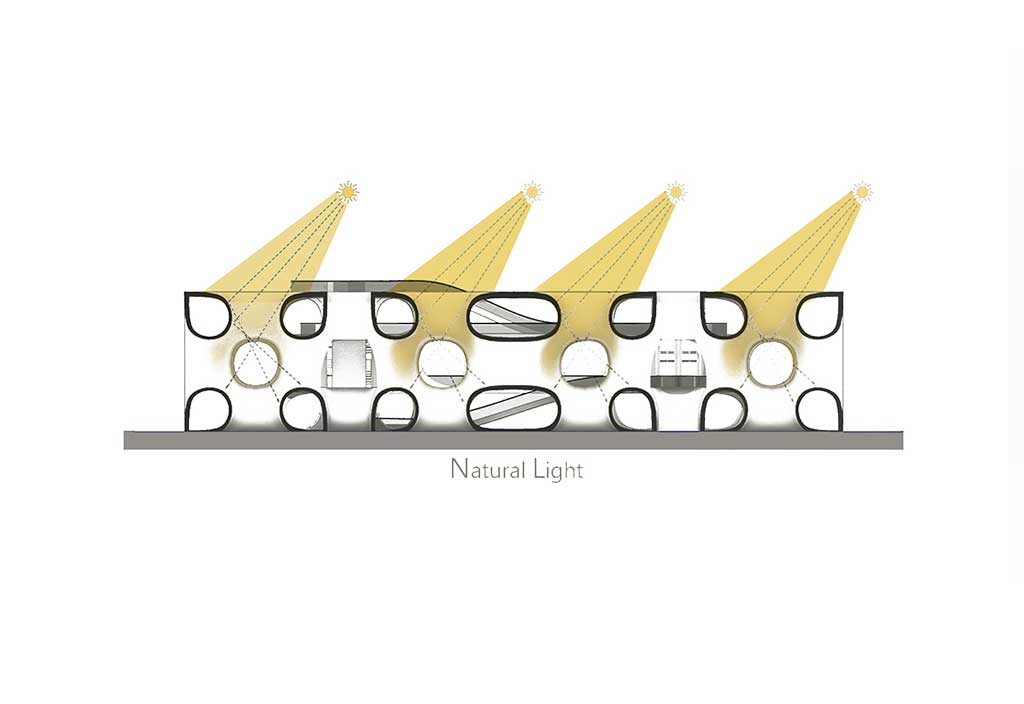
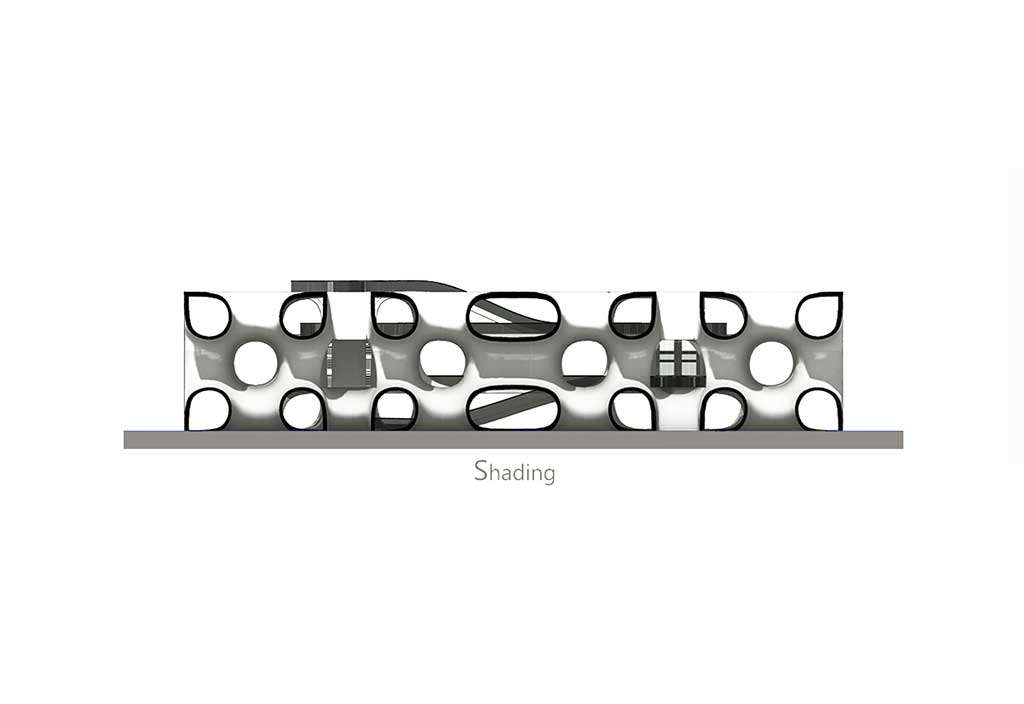
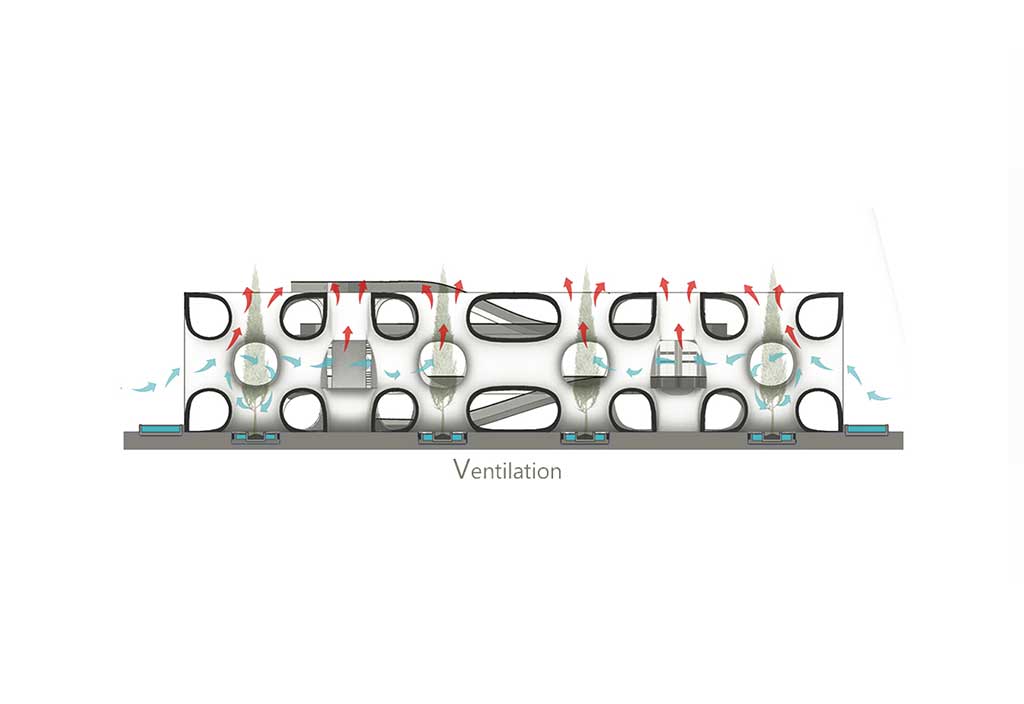

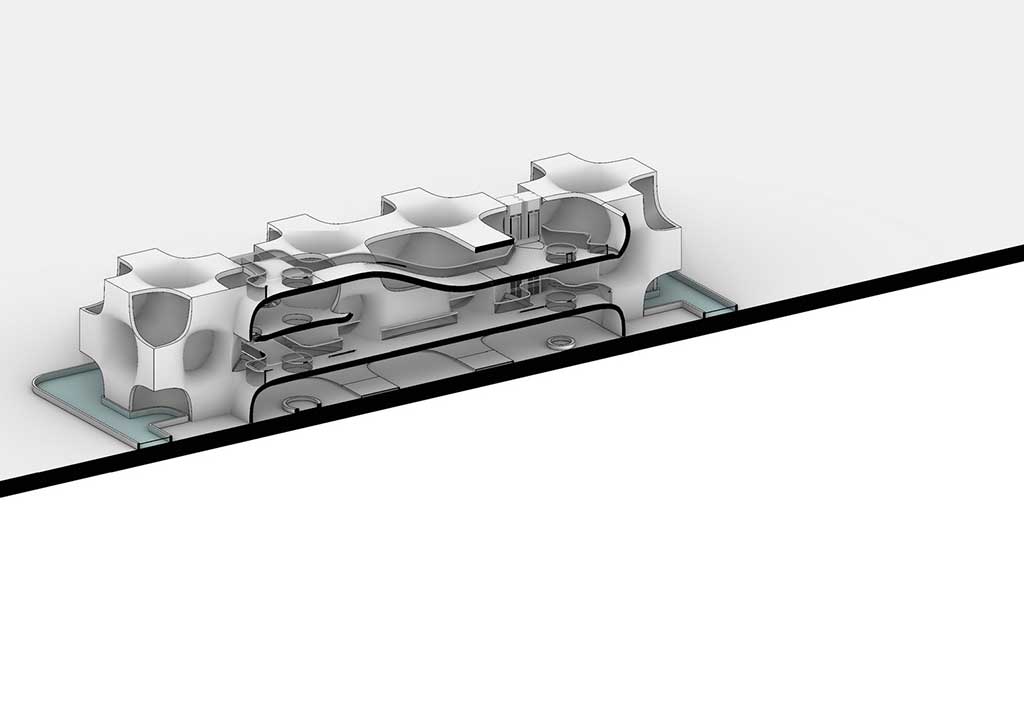

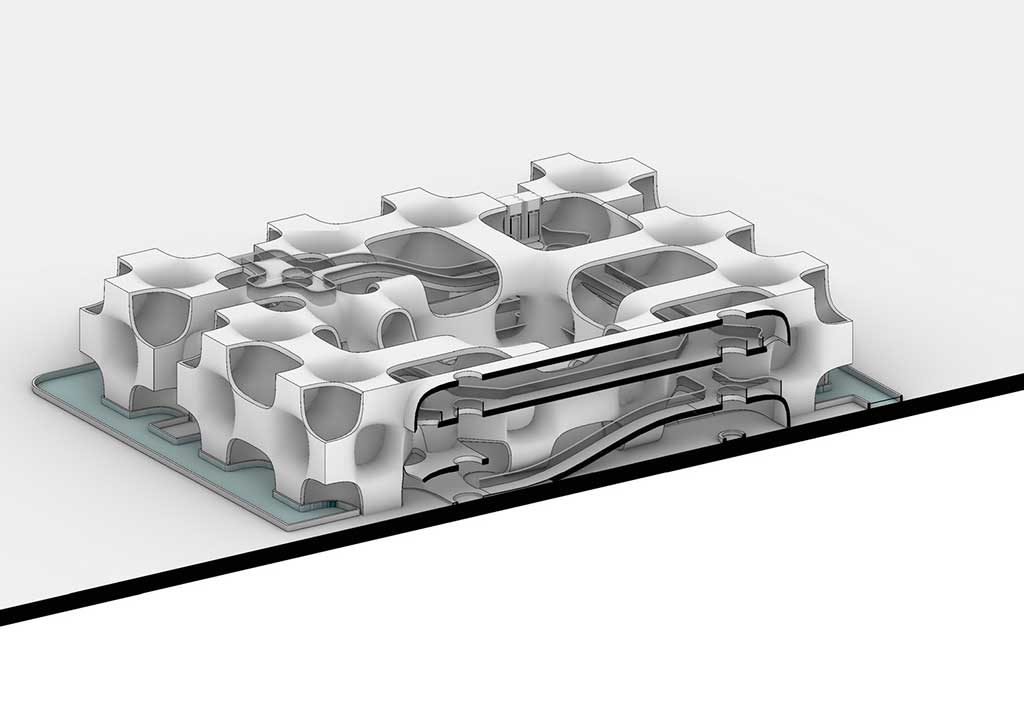
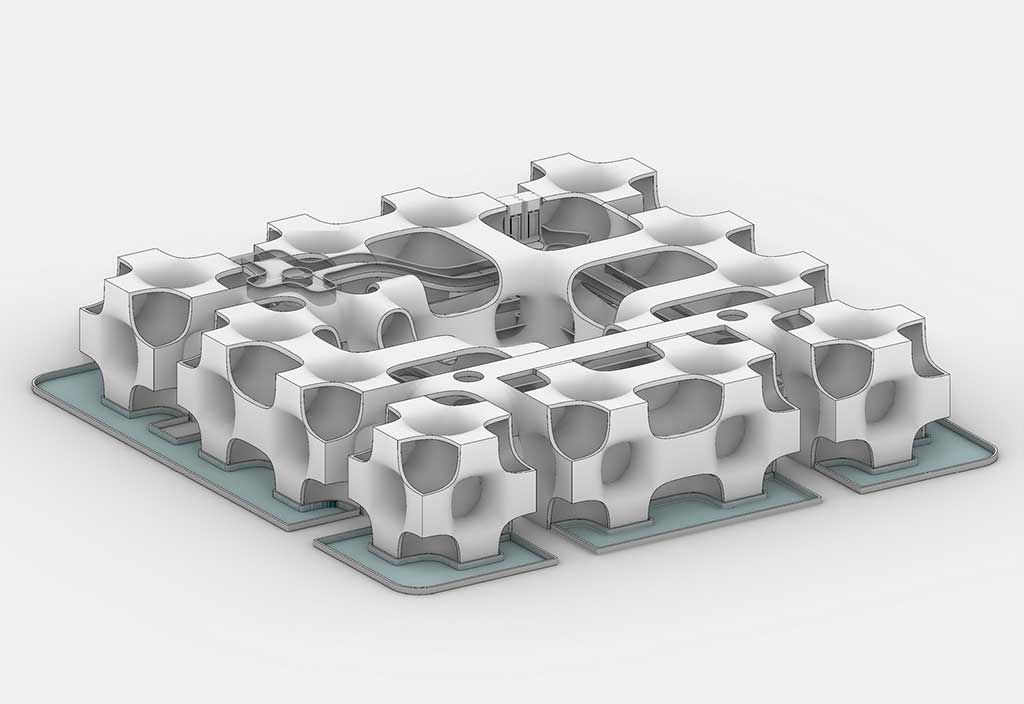




























WORLD EXPO 2020, REDEFINING THE VERTICAL GARDEN
Dubai | World Expo | 2020
The design project of the Iran pavilion at the 2020 Dubai Expo began with the question of how to present a nation with such a long history and cultural and climatic diversity to the world in an architectural project. We concluded that perhaps the best solution is to show the nature and type of thinking of Iranians towards their environment and their problem-solving strategy in dealing with various issues that will indicate their worldview.
The project site was located in the city of Dubai, a region of the earth's geography that is known for heat and high air temperature. To solve the problem on a large scale, we tried to create a model of a solution by matching this climate with the architecture of the hot climate and desert regions of Iran. The predecessors in providing and creating comfort and sustainable living conditions in this climate. As one of the most important elements of native Iranian architecture, the yard has taken on different physical patterns in different climates by observing the principle of compatibility with the environment. In the desert areas, the pattern of the central courtyard was used, continued, and developed as one of the indicators of sustainable design in the traditional architecture of Iran to provide favorable conditions in one of the harshest biological climates. So, in the first step, we emptied the courtyard from the hypothetical mass of the pavilion and defined the garden in the middle of the space.
In the next section, we considered the remaining mass as a horizontal frame and tried to control the transparency/solidity at the edge of the space by punching the walls and reaching a semi-transparent result. In this process, by taking advantage of the 9-part pattern of the Iranian pavilion and modernizing it as one of the most important patterns of Iranian architecture and multiplying it in the form of three-dimensional modules, we tried to display the field and the public in an intertwined way. The creation of a multi-level corridor around the exhibition of magnificent works by different artists and the central courtyard as the central organizer creates a dialectic of fluidity and stillness in a large magnetic field for the audience and invites them to be present in this space.
Type: public
Location: Dubai
Design Team: Ali Ahmadi, Shagaig Birami, Azin Zamani
Advisor: Christoph Woop
Design Supervisor: Hasht Architects
Graphics: Hasht studio
Area: 2000 square meters
Status: Designed
Date: February 2020